#sci comm
Text
Apes are a kind of monkey, and that's ok
This is a pet peeve of mine in sci comm ESPECIALLY because many well respected scientific institutions are insistent about apes and monkeys being separate things, despite how it's been established for nearly a century that apes are just a specific kind of monkey.
Nearly every zoo I've visited that houses apes has a sign somewhere like the one below that explains the supposed distinction between the two groups, focusing on anatomy instead of phylogeny.

(Every time I see a graphic like this I age ten years)
Movies even do this, especially when they want to sound credible. Take this scene from Rise of the Planet of the Apes:
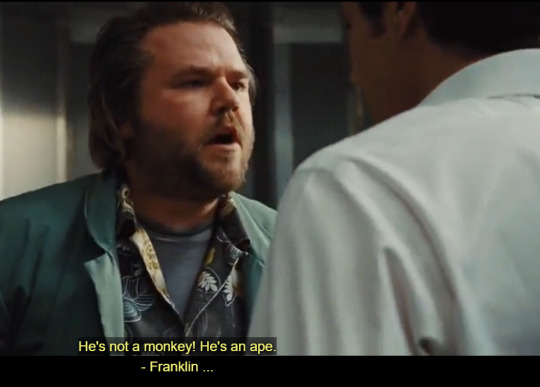
This guy Franklin is presented as the authority on apes in this scene, and he treats James Franco calling a chimpanzee a monkey like it's insulting.
But when you actually look at a primate family tree, you can see that apes are on the same branch as Old World monkeys, while New World monkeys branched off much earlier.

(I'm assuming bushbabies are included as "lorises" here?)
To put it simply, that means you and I are more closely related to a baboon than a baboon is to a capuchin.
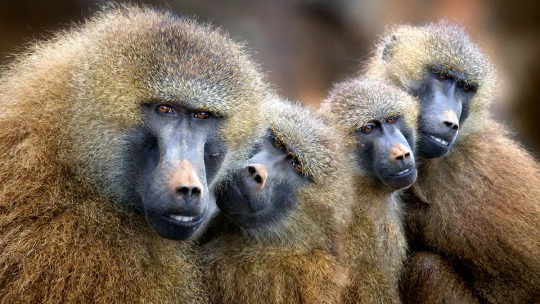
Either the definition of monkey includes apes OR we can keep using an anatomical definition and Barbary macaques get to be an ape because they're tailless.

"I've got no tails on me!"
SO
Why did all this happen? Why did we start insisting apes are monkeys, especially considering the two words were pretty much interchangeable for centuries? Well I've got one word for ya...

This the attitude that puts humans on a pedestal over other life on Earth. That there are intrinsically important features of humanity, and other living things are simply stepping stones in that direction.
At the dawn of evolutionary study, anthropocentrism was enforced by using a model called evolutionary grades. And boy howdy do I hate evolutionary grades.
Basically, a grade is a way of defining a group of animals by using anatomical "complexity". It's the idea that evolution has milestones of importance that, once reached, makes an organism into a new kind of thing. You can almost think of it like evolutionary levels. An animal "levels up" once it gains a certain trait deemed "complex".
You can probably see the issue here; that complexity is an ephemeral idea defined through subjectivity, rather than based off anything truly observable. What makes walking on 2 legs more complex than walking on four? How are tails less complex than no tails? "Complexity" in this context is unmeasurable, therefore it is unscientific. That's why evolutionary grades suck and I never want to look at one.
For primates, this meant once some of them lost their tails, grew bigger brains, and started brachiating instead of leaping, they simply "leveled up" and became apes. Despite the early recognition that apes were simply a branch of the Old World monkey family tree (1785!), the idea of grades took precedent over the phylogenetic link.
In the early years of primatology, humans were even seen as a grade "above" apes, related but separated by our upright stance and supposed far greater intelligence (this was before other apes were recognized tool users).

It wasn't until the goddamn 1970s that it was recognized all great apes should be included in the clade Hominidae alongside humanity. This was a major shift in thinking, and required not just science, but the public, to recognize just how close we are to other living species. It seems like this change has, thankfully, happened and most institutions and science respecting folks have accepted this fact. Those who don't accept it tend to have a lot more issues with science than only accepting humans as apes.

And now, we come to the current problem. Why is there a persistent idea that monkeys and apes are separate?
I want to make it clear I don't believe there was a conscious movement at play here. I think there's a lot of things going on, but there isn't some anti-monkey lobby that is hiding the truth. I think the problem is more complicated and deals with how human brains and human culture often struggle to do too many changes at once.
Now, I haven't seen any studies on this topic, so everything I say going forward is based on my own experience of how people react to learning apes (and therefore, humans) are monkeys.
First off, there is a lot of mental rearranging you have to do to accept humans as monkeys. First you, gotta accept humans as apes, then you have to stop thinking in grades and look at the family tree. Then you have to accept that apes are on the Old World monkey branch, separate from the New World monkeys.
That's a lot of steps, and I've seen science-minded zoo educators struggle with that much mental rearranging. And even while they accept this to an extent, they often find it even harder to communicate these ideas to the public.
I think this is a big reason why zoos and museums often push this idea the hardest. Convincing the public humans are apes is already a challenge, teaching them that all apes are monkeys at the same time might seem impossible.
I believe the other big reason people cling to the "apes-aren't-monkeys" idea is that it still allows for that extra bit of comforting anthropocentrism. Think of it this way; anthropocentrism puts humans on a pedestal. When you learn that humans are apes, you can either remove the pedestal and place humans with other animals, OR, you can place the apes up on the pedestal with humanity. For those that have an anthropocentric worldview, it can actually be easier to "uplift" the apes than ditch the pedestal.
Too make things worse, monkeys are such a symbol of a "primitive" animal nature that many can't accept raising them to the "level" of humanity, but removing the pedestal altogether is equally painful. So they hold tight to an outdated idea despite all the evidence. This is why there's often offense taken when an ape is called a monkey. It's tantamount to someone calling you a monkey, and that's too much of a challenge to anthropocentrism.
Personally, I think recognizing myself as a monkey is wonderful. Non-ape monkeys are as "complex" as any ape. They make tools, they have dynamic social groups, they're adapted to a wide range of environments, AND they have the best hair of all primates.
I think we should be honored to be considered one of them.



3K notes
·
View notes
Text
Why Have All the Birds Stopped Singing?
Originally posted on my website at https://rebeccalexa.com/why-have-all-the-birds-stopped-singing/
Summer is nearly halfway through, and while the days are still long there are already changes hinting at fall’s arrival. The heat causes some of the leaves on trees and shrubs to begin to turn just a little, and the sunset is a bit earlier each evening. One phenomenon that often startles people is when they realize that–seemingly overnight–the birds stopped singing.
Now, it’s not unusual for them to quiet down when a predator passes by (that includes us big, scary humans, by the way.) After all, they don’t want to be noticed by something that would happily turn them into a snack. But with each passing week there are fewer birdsongs in the daily chorus, and by the end of August pretty much all the birds stopped singing. Why is that?
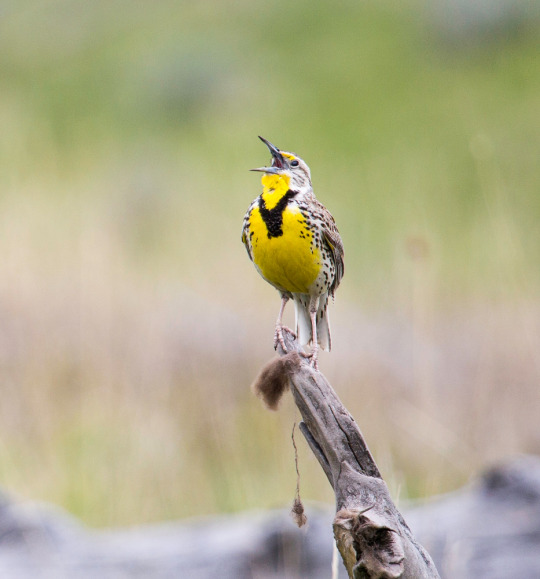
Well, first we need to look at why birds sing in the first place. I start noticing songs late in winter, and then the diversity and frequency build up throughout spring. This is correlated with nesting season. Both male and female birds sing, though male songs have historically been given more attention.
Songs serve to establish and protect territory in which mated pairs of birds build their nests; birds of the same species know that this spot is taken, move along, please–or else. And they also help birds to attract their mate for the year; male songs in particular have been studied in this regard. So what sounds like lovely music to us is serious business for birds, meaning either “Hey, baby, check ME out!” or “GET OFF MY LAWN!” (Birdsong is also more surprisingly complex than we had assumed!)
The singing continues throughout nesting season. Some species of bird only raise one clutch of young a year, especially those whose young may take several weeks to fledge. Others, especially many songbirds, can raise two or even three clutches a year, seeing their young fledge and leave the nest within two weeks of hatching. As long as the nest is active, the parent birds work actively to protect it, to include re-establishing residency through song.
There is, of course, a risk associated with singing. Birds aren’t the only animals noticing the singer; predators also use these songs to home in on a potential meal. Singing does increase the likelihood of becoming prey, but it’s effective enough in helping spread one’s genes that it’s worth the risk from an evolutionary perspective. A bird that gets nabbed while singing near a nest is more likely to have passed its genes through at least one clutch of eggs, and if the surviving parent can get some of the young to fledgling age, then they have a good chance of surviving to spread the singing genes on to the next generation.

As soon as the nest is empty for the year, and the last batch of young have successfully fledged, the birds stopped singing. Why keep bringing attention to yourself when you no longer need to? It’s time to transition to non-breeding behavior patterns, whether that means a solitary existence, or a social group for winter.
But there’s another reason birds quiet down this time of year. By this point, their feathers are pretty beat up from their spring migration (even many resident species still engage in local migrations), and then defending their nests and literally running themselves ragged getting food for demanding, hungry young. They have to prepare for the fall migration, which for many species is a marathon thousands of miles long to their wintering grounds.
If you’re a bird whose flight feathers in your wings and tail are torn and even broken, you aren’t going to be a very efficient flier. Each wingbeat is going to cost you more energy, and on a long journey that inefficiency can be fatal. So July and the first part of August are prime times for North American birds to molt, shedding out old feathers and growing fresh new ones. By the time they’re ready for liftoff for the fall migration–or simply surviving winter’s cold right here–those shiny, undamaged feathers are going to be the perfect tools for energy-efficient flight. By saving valuable calories, they increase the likelihood that they’ll survive to see another breeding season next year.

This northern mockingbird (Mimus polyglottos) looks a little sad with a bare head–but don’t worry, those feathers will grow back soon!
But while they’re molting, they’re going to be additionally hindered in flight. That makes them even more vulnerable to predation. So this is another great reason for birds to quiet down as summer winds on. (They also may look a little silly, and while they probably don’t feel embarrassed about losing all the feathers on their head, I wouldn’t blame them if they were, in fact, a little self-conscious about it.)
Never fear, though–once late winter arrives next year, we’ll get to start hearing our birds warming up their syrinxes again, and soon the mornings will be full of the dawn chorus, fresh and new.
Did you enjoy this post? Consider taking one of my online foraging and natural history classes or hiring me for a guided nature tour, checking out my other articles, or picking up a paperback or ebook I’ve written! You can even buy me a coffee here!
#birds#birdblr#ornithology#birdsong#birbs#nature#wildlife#animals#animal behavior#wild animals#ecology#phenology#science#sci comm#science communication#biology#wildlife biology
94 notes
·
View notes
Text
Bisexuals Win! We don't 'discriminate'. My adhoc theory that 'Bisexuality is the biological default for Mammals, and heterosexualism is a human cultural norm' is established!
"Same-sex attraction and behavior are widespread across the animal kingdom, from male gentoo penguins co-raising eggs, sex among all-male bachelor packs of gorillas and “seasonally bisexual” flying fox bats. "
including more than 1,500 species, according to a Nature Ecology and Evolution study.
“an ancestral condition of indiscriminate sexual behaviors directed towards all sexes.” (this is fancy talk for 'bisexual' behaviour)
#sci comm#I have NOT checked this source#I ahve NOT confirmed this study#I'm feeling saucy and daring#and also#posting without confirmation#bi bi bi#fuck amatonormativity#cis-hets fuck off#science!#op ed
16 notes
·
View notes
Text
In conservation biology we think a lot about spatial configuration - how habitat is fragmented, or how it's connected, or how global patterns like biodiversity are determined.
What if we consider not only geographic space, but also climate space as well? Climate regions can cover the Earth just like geographic regions do, and can be quantified by spatial traits like area and fragmentation.
Come read our latest digest that explores research behind the geography of climate, and how it can be highly useful in explaining why species are found where they are.
#ecology#scientists on tumblr#climate change#habitat connectivity#landscape ecology#sci comm#conservation
22 notes
·
View notes
Note
What’s the best slime mould
I feel incredibly under qualified to answer this question, so I'm going to write a letter to me MP insisting we do a national inquiry to answer this urgent question.

In the mean time I am a big fan of the iridescent obovoid Lamproderma species (or any of the shiny ones).
But can't go past Fuligo septica for it's ubiquity and sci-comm value for raising awareness that these diverse and incredible organisms, and want to reinforce here my position that 'witch's butter' is a cooler and more evocative common name than 'dog vomit slime mold'

5 notes
·
View notes
Text

That's No Moon: Star Wars Planetary Science
From the frozen landscape of Hoth to the scorching deserts of Tatooine, the Star Wars galaxy is filled with many fantastical worlds and alien life. As strange as these worlds may seem, each and every one of them was inspired by what we know of our galaxy. In this panel, join a group of expert scientists as they look into the forces that inspired the many worlds in a galaxy far, far away. Featuring Dr. James T. Keane (planetary scientist), Dr. Tiffany Kataria (planetary scientist), Randy Flores (paleontologist), and Gabriel Santos (paleontologist and Cosplay for Science)
Full Schedule: https://legends-con.com/guests-programming/
Buy tickets now, and join us for a celebration of all things Expanded Universe in Burbank, CA on September 9th & 10th: https://www.eventbrite.com/e/legends-consortium-2023-tickets-541786186067
#Star Wars Lore#STEAM#EPO#STEM#Science Is Fun#Cosplay For Science#STEM Outreach#Sci Comm#Science Education#Science Communication#Natural History#Planetary Science#Expanded Universe#Star Wars Expanded Universe#Star Wars Legends#SWEU#Star Wars EU#SW Expanded Universe#LegendsCon#Star Wars Books#Star Wars Comics#Star Wars Games
2 notes
·
View notes
Note
Sorry for another question about it, I’m so into this subject, is there any genetic phenomenon that you think would fit how magic show up that nots xx/yy, I mean the world as we know is weird and there gotta be something that’s similar ?
There are certainly a lot of genetic phenomena that could explain the inheritance of magic! When it comes to Muggles having magical children, the acquisition of magic in a bloodline could be explained by epigenetic changes made to DNA that are passed down to offspring. Factors in our environment (cigarette smoke, ionizing radiation, stress, lifestyle, etc.) can cause changes in our DNA that get passed down for generations. Bit of a downer, but this is how some types of cancer can start to run in a family. In the magic example, maybe Muggles who unwittingly spend a lot of time near wizards are affected by magic in a similar manner to radiation that affects the genetic material they pass onto their offspring.
It's rare, but there are also viruses that can alter a host's DNA in heritable ways. And over generations, that viral DNA can be integrated into the genome. We have a lot of evolutionary evidence that ancient viral DNA in our genome helps us fight modern infections today! Perhaps there's some kind of magical "bug" that becomes embedded in Muggle genomes.
I like both of these ideas because they suggest that perhaps all wizard bloodlines started with Muggles... How far back in human history does "pure-blood" mean, anyway...? 👀
#anon ask#we've really gone down the rabbit hole now haven't we#meta#science asks#harry potter#fanfic writing#sci comm
3 notes
·
View notes
Text

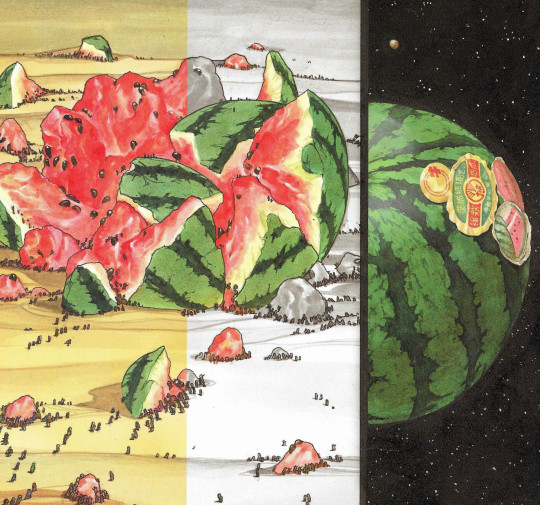
KATSUHIRO ŌTOMO for COMME DES GARÇONS | 2013
#fashion#comme des garçons#katsuhiro otomo#manga#sci-fi#illustration#akira#contemporary art#japanese#art#u
2K notes
·
View notes
Text
The HUGE analysis - This season starts and ends with a discussion, doesn't it?
Ok, my loves. This was one of the really long metas I've been working with, and probably the one that has taken me the longest (because it depended a lot on rewatching the season time and again).
I couldn't help to notice that the fist interaction Aziraphale and Crowley have in season 2 is a fight, really. Yeah, we have the beautiful “in the beginning” sequence, with both of them being angels and happy and all the such (oh, how lovely, Neil Gaiman planting the seeds of why it will matter to us that Aziraphale will not be fighting the idea of inviting Crowley to Heaven, because he remembers that happy, careless guy). But after the intro, we see them having a big disagreement… And we end the season in the biggest disagreement they have had, probably, in 6,000 years.
I love over-analyzing and dissecting narratives and characters, and more so if I can use only what we’ve been shown in the screen. Therefore, I believe that the first fight of the season tells us a lot of the things we will need to know to understand the final fight of the season between them. Let’s take a look, shall we?
The first fight is motivated by having an amnesiac Gabriel in the bookshop.
They see the same circumstance: Gabriel in the bookshop means trouble with Heaven. He is also an individual risk, because he has menaced Aziraphale directly (well, Crowley under the visage of Aziraphale).
It affects each of them differently: even when they both panic, Aziraphale feels compelled to be kind to Gabriel (gives him a blanket and hot cocoa) while Crowley has a full-on panic induced reaction and gets defensive.
They propose opposite solutions: Azi wants to do the Good thing, taking the “higher road” (help Gabriel), while Crowley wants to do His Own thing: “Protect the precious, peaceful, fragile existence I have carved for myself”
At that moment, Aziraphale corrects him and marks a “we”, which is very interesting. But immediately after that, Aziraphale gets all "my way or the highway".
Crowley asks for clarification, with a well-leveled tone of voice: “Is this how it is going to go?”
Azi clarifies "no, I want you to help me!" But then he does the passive-aggressive thing: "if you won't, you won't". (oh, Aziraphale, how you triggered me here, my dear chap. I was angry at the character the first 6 times I saw this)
Therefore, Crowley is out. He marks a clear limit: “I won't. You are on your own”, and then storms out. No Eccles cakes would help him: he needs a breather and counting to 10. That doesn't help either.
Crowley only comes back after gaining an extra perspective: the "extreme sanctions" talk with Beelzebub.
When he comes back, Aziraphale will stand his ground: he feels he deserves an apology, which is delivered via a “I was wrong, you were right” literal admission (even when he probably wasn't "right", but that's their way... And they've been doing it since 1650, or so they say). Then they are able to work together again.
Now, let’s see how this dynamic plays out in their last discussion of the season:
They come from different sides of the same experience: Crowley went to Heaven to investigate and learned about the plans to continue with the end of the world, while Aziraphale stayed defending the bookshop. Then Crowley saves the humans, while Aziraphale solved the Beelzebub + Gabriel affair.
They haven’t had time to talk, as they get interrupted by The Metatron. While he takes Aziraphale, Crowley receives a visit from Maggie and Nina.
Each one of them gained an extra different perspective: Azi, the Metatron proposal (and veiled menace); Crowley, the pep talk/scolding from the couple they were trying to get together.
This makes them develop different solutions:
Crowley wants to finally admit what Azi has been saying all the season: they are a "we" (Azi said so when Crowley talked about his “precious, peaceful, fragile existence”; he said it again when talking about “our car” and reinforced it with the bookshop)
Azi wants to take the "higher road": go to Heaven, reinstate Crowley as an angel, so they can still work together.
Crowley sees the “usual dynamic” of their disagreements coming: it will be Azi’s way (or the highway). That has happened before, in front of our eyes, and not only in this season: it happened also in season 1, but we have already attested that it is still happening, and it is even “worse” (Aziraphale being a little “petty” with the “if you do, it is fine, but if you won’t, you are on your own” in the Gabriel discussion).
Crowley gets indignant. He asks, tentatively, if he told him where to stick it… And then he reinforces his belief. We are better than that, YOU are better than that, you don’t need them, I don’t need them; then he makes the first mention of the offer of getting back to Hell (which he hadn’t shared with Aziraphale), and makes a new point: I said no, neither should you!
Aziraphale goes back to the “you are the bad guys!” thing. Heaven being the side of Truth, of Light, of Good… It is not the propaganda Crowley needed for this move.
Crowley then clarifies the fallacy in his logic: when Heaven ends life on Earth, it’ll be just as dead as if Hell ended it.
Aziraphale then sees the "undesirable result" coming: Crowley is not going to accept, not with that argument.
Crowley makes his plead grow in urgency: Tell me you said no.
Aziraphale’s pitch of voice goes high (usually used as a sign of distress): “If I’m in charge, I can make a difference.”
Crowley understands. This is his “my way or the highway” moment. That’s why he comes up with the courage to make his half-proposal-half admission.
Crowley never gets to state out loud the “I want us to be together in a formal way” part. His voice breaks before he does so. He mentions all of the reasons they have to stay together, which Aziraphale already knows: we have been together for a long time, we’ve been a group (“our own side” was the way he always said it before) and we’ve spent our existence pretending that we aren’t (Azi also knows that! He has been working hard into making Crowley notice it!)
You can see, when they shoot Aziraphale’s face, he squints a little during that moment: maybe questioning, a little disbelief? As usual with Michael Sheen, it is a blink it and you’ll miss it moment.
After the grunt, Crowley proposes his alternative solution: going off together, using Beelzebub & Gabriel as an example that they could.
Therefore, what Aziraphale has just listened is what he already knew: yes, they are a “we”. Crowley wants to run away (he had proposed it twice during the Armageddidn’t, another pattern they have already established).
The next step is the usual way for Aziraphale: he reinforces his proposal: come with me, to Heaven. Ill’ run it, you can be my second in command. This idea has rubbed me wrong since the first time I watched this scene. Why remark the hierarchy? (not to say that I’m in Crowley’s side in here, but… It was weird and uncomfortable to think of them in a vertical power structure; they have always been equals).
Then, he goes back to making a difference, only it is “we” this time. Crowley is noticing he won’t back down… But Aziraphale usually doesn’t.
“You can’t leave this bookshop” works as a representation, a figure of speech. “This Bookshop” is “This life we have been building”, and they both understand it as such.
“Oh, Crowley… Nothing lasts forever…” For Aziraphale, it means he can leave this for something greater. For Crowley, it means… Actually, the same. But without him. Because he knows the “my way or the highway” side of Aziraphale, and none of them will budge. Aaaaand… that’s Crowley heart breaking. The rest of the scene happens with Crowley in “breakup mode”.
Aziraphale is used to “the discussion dance”. He Insists, “Crowley! Come back, to Heaven, work with me! We can be together, Angels! Doing good!”. He promises all he can: “come back, work with me, we can be together”, which have always been Crowley’s triggers to change his mind. However, the problem lies within the “angels doing good”. That’s the part that Aziraphale would need to let go before getting back to Crowley.
And then, he breaks down: “I need you!!” That has always worked! Aziraphale knows that Crowley loves being needed, he won’t leave his angel when in need, right?
And then, he gets angry. And he questions if Crowley has understood what he is offering, which transforms in an “I don’t think your exactly and my exactly are the same exactly” all over again.
Crowley is already brokenhearted, so he answers truthfully, as far as he knows. He understands how terrible the offer of going back to heaven is for both of them, and is not aware of the veiled threat in Metatron’s offer. He knows that going back to Heaven is a non-negotiable boundary, and Aziraphale is absolutely determined to cross it.
Aziraphale, then, does his passive-aggressive shit again: “I guess there is nothing more to say”. My guy, my love, you need to become better at negotiating with your loved one.
This is where Crowley decides to show, don’t tell, the hurt: no nightingales. And then… The “You idiot. We could have been… us” (no, you couldn’t, it was always too late!!! First the pandemic, which I’ve decided to treat as canon, then Gabriel. They never stood a chance).
In this context, Crowley’s kiss is a desperate way to say good-bye to the person he cared most for the last 6,000 years; also an angry way to regain some semblance of control and affect Aziraphale; and a final way to get some “closure”. Is there desire? Is there love? Maybe. But they are lost in a cocktail of emotions that have been stated during the rest of the discussion.
The angry “I forgive you”, which is also a usual dynamic for Aziraphale when he is angry with Crowley, gets there too late for Crowley to react to. He has already “checked out”. That’s why the “don’t bother” feels almost like an afterthought and comes after a small sigh.
After watching this 16 times, I’m pretty confident that the first thing Aziraphale mouths is a “no…” and then… he sobs a little. Michael Sheen, you’re a beautiful actor. The rest of it is a masterclass in using microexpressions to convey a whirlwind of emotions in under 2 minutes.
Sooooo... Did I hurt my own emotions while writing this? Yes. Did I absolutely need to do so? Also yes. Even when I like doing intertextual readings (and that's why I like bringing some theology to some of my musings), reading what is in "the text" (in the scenes we have watched, in the dialogues we've been shown) gives me an enormous amount of pleasure, and I find a lot of comfort in believing that most of the things that I'll need to understand and enjoy a great piece of media are being given to me inside it. And I believe Good Omens is a great piece of media!!
I have no Shakespeare to offer you this time. Let me know what you think!!
#good omens 2#good omens meta#good omens spoilers#ineffable divorce#the final fifteen#narrative analysis#character analysis#good omens#anthony j crowley#aziraphale#If I was into Academia this should be counted as a journal referenced publication#Making my Comms Sci degree useful for something
469 notes
·
View notes
Photo
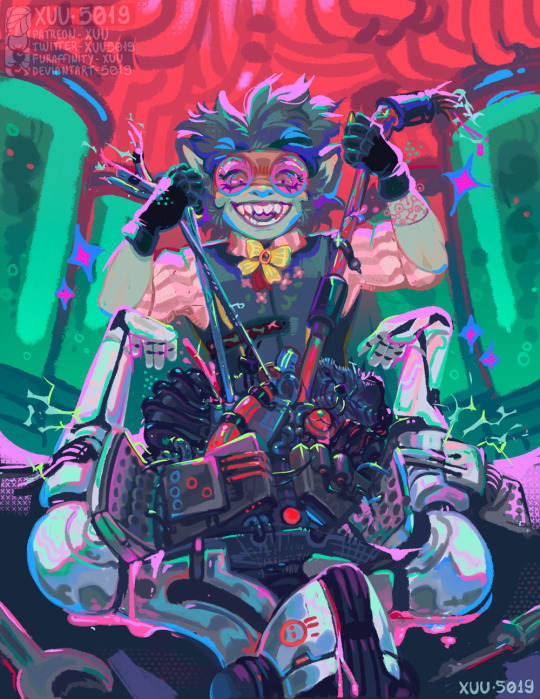
Experimental robot gore commission for RagtimeLime
#artists on tumblr#tumblr artists#BRart#brazilian artists#latino artists#brazilian artist#BRartist#latino artist#gore#robot#comms#commission#digital#digital art#art#artwork#digital artwork#fantasy#sci-fi
207 notes
·
View notes
Photo

This was one of the commissions I had the pleasure of doing a while back for the very kind Addi!
#art#art commission#art comm#illustration#figure#portriat#sci fi#star chart#stars#map#character design
528 notes
·
View notes
Text

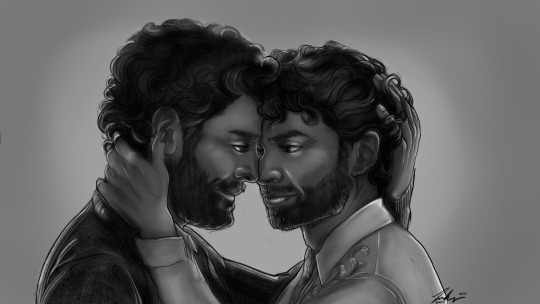

Offering up character commissions and prop/environmental commissions like these:


Hey everyone, it's that time again. I'm trying to catch up on bills and I have open commission slots so I am offering my services.
I know everyone's wallets are strained now, that seems to be how the world has shifted and thats tough. If you arent interested or cannot afford a commission at the moment.
I would deeply appreciate a reblog or a signal boost.
But, if anyone needs some schematic art or character art, please hit me up. My price sheet is on my pinned and also linked above. DM me with any questions or you can email me @ (hikuswing @ gmail . com).
Even small commissions would be amazing, rn, and anything beyond my current round of bills (about 150 in all) will be donated to help gaza children. I had meant to do an art drive previously and I want to offer that now. I may be poor but I am not currently in mortal danger so as soon as I am stable I will help as much as I can.
#artists on tumblr#digital illustration#digital artist#open commissions#art commissions open#art comms open#commission info#art commission info#signal boost#please#sci fi art#fan art#donations#donations for palestine#please reblog
76 notes
·
View notes
Text
How to Identify Spotted Lanternflies
Click here to learn more about the How to Identify article series.
Name: Spotted lanternfly (Lycorma deliculata)
Range and typical habitat(s): Native range includes China and Japan; is invasive in North America and South Korea
Distinguishing physical characteristics (size, colors, overall shapes, detail shapes) and behaviors: The spotted lanternfly is a distinctive looking insect at any stage of development. The nymphs/instars have round, black bodies that taper to a small head with two large, round, yellowish eyes, one on either side. Younger instars have white spots, while the fourth and final instar additionally features bright red patches on its body. They do not have wings.
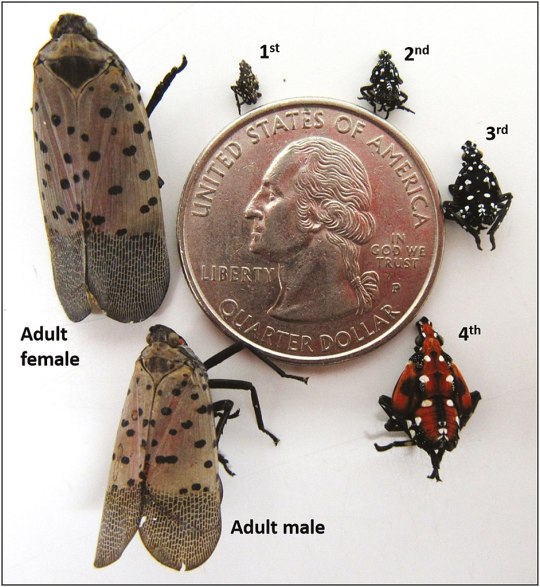
The adult spotted lanternfly is about an inch long, and is tan to light grayish-brown with a dark head and legs, and a dark triangle on the shoulders. The forewings also feature dark spots, and a dark web-like pattern at the wingtips, which are rounded in shape. The hindwings are often cover when the insect is at rest, but when spread they display bright red patches with black spots, and the distal ends are black with a white horizontal bar across each. The abdomen is thick and has yellow stripes, and the tip of the abdomen is red. The head is comparatively small, and again has two yellowish round eyes. In spite of having wings, they do not properly fly. Instead, they use these wings to help them leap from one plant to another.
The nymphs usually hatch in April or May. By July, the first adults appear, and prepare to mate and lay eggs. One female can lay up to fifty eggs that are protected in a waxy casing; they look a bit like a clump of clay or dirt stuck to a tree, wall, or other surface. They will overwinter in that spot, and in fact the colder the temperatures the more eggs hatch the following spring. The adults, meanwhile, usually die off by the end of the year; a lanternfly that has reached one year in age is geriatric indeed.

Spotted lanternflies are herbivorous; the nymphs prefer the tree of heaven (Ailanthus altissima), but will also opportunistically feed on other plants, ranging from trees to grapevines to soybeans. The nymphs and adults both suck sap from their host tree using specialized mouthparts, and in sufficient numbers can be deadly to the plant. All told, spotted lanternflies have been observed feeding on the better part of two hundred plant species.
Other organisms it could be confused with and how to tell the difference: There are two other species in the genus Lycorma that look quite similar to L. deliculata; both are found solely in Asia. L. imperialis, found in China, India, and Bangladesh, looks almost identical to L. deliculata, except the base color of the forewings in adults tends to be darker and greener in tone than the grayish-brown seen in L. deliculata. The coloration on L. imperialis’ abdomen may also vary, with orange or red patches being common.

L. imperialis. Photo by Tanja Popp, CCA-SA-4.0-Intl
L. meliae is more obviously a different species than L. deliculata. Its forewings are a deep red with the same black spots and webbing pattern. There is also a variant that is solid black except for white spots on the forewings, with a deep red to orange abdomen with black stripes or splotches. L. meliae is only found in Taiwan.

L. meliae. Photo by Lin Sun-Fong, CC BY-SA 2.0
Anything else worth mentioning? Spotted lanternflies are considered to be a highly invasive insect in North America; they arrived by accident in 2014 and have been spreading throughout the northeast since then. They do significant damage to crops such as soybeans (Glycine max) and apples (Malus domestica), and also attack native plants like black walnut (Juglans nigra) and Virginia creeper (Parthenocissus quinquefolia). The nymphs parasitize the tree in such large numbers that they can cause severe damage in a short period of time. Additionally, leaking sap from the tree as well as the nymphs’ waste (honeydew) not only drip onto the plants’ leaves and hinder photosynthesis, but they also promote fungal growth that further injures the plant.
In its native range, the spotted lanternfly’s usual host is the tree of heaven. Like the lanternfly, this tree is also highly invasive in North America, and has been a key factor facilitating the spread of spotted lanternflies. Many efforts to control or prevent the spread of lanterflies involve removing tree of heaven, which can be quite difficult to eliminate completely. However, evidence is growing that lanternfly nymphs that feed on plants other than tree of heaven are not as healthy, and this may be a crucial control in keeping these insects in check.
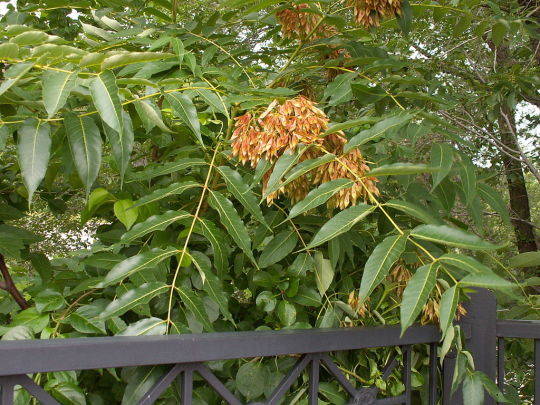
People in North America who find the nymphs or adults, and especially egg casings, are encouraged to smash them on sight. Other regions around the world that regularly trade agricultural products with China or North American countries are also on the lookout for any sign of spotted lanternflies being introduced.
Further Reading:
USDA APHIS: Spotted Lanternfly
PennState Extension: Spotted Lanternfly
Invasive Bug Prompts Quarantine In Pennsylvania Townships
Spotted Lanternfly in New Jersey: What you need to know
Spotted Lanternfly (Hemiptera: Fulgoridae) Can Complete Development and Reproduce Without Access to the Preferred Host, Ailanthus altissima
Did you enjoy this post? Consider taking one of my online foraging and natural history classes or hiring me for a guided nature tour, checking out my other articles, or picking up a paperback or ebook I’ve written! You can even buy me a coffee here!
#spotted lanternflies#spotted lanternfly#insects#invertebrates#invasive species#nature#wildlife#animals#invasive plants#environment#conservation#science#sci comm#science communication#PSA#nature identification
69 notes
·
View notes
Text








HELLO IM OPENING 5 SLOTS FOR COMMISSIONS PLEASE MESSAGE ME FOR INQUIRIES!!!! REBLOGS ARE HIGHLY APPRECIATED
#comm#commision#art#artist#kaz miller#kazuhira miller#oc#oc art#sci fi#trans art#spiderpunk#spiderman#rocky horror show#the first head in muscle tier is for wingedtrumpet on ig#the bunny character is for flyagaricc on twt#rocky horror picture show
146 notes
·
View notes
Text
Canada has been a leader in ecological corridor research and policy for decades. As one of the largest countries in the world, all those forests, rivers, lakes, and mountains help connect wildlife populations and support a huge amount of biodiversity. In our latest digest we summarize Canada's latest connectivity policies, and explain how its National Program for Ecological Corridors and the development of its 2030 National Biodiversity Strategy make it a stand-out in promoting connectivity across North America.
2 notes
·
View notes
Text
While on vacation I went to a nature center and they had a trail that followed a path of a tornado that had hit the center a few years ago.
The center had turned the destroyed area in the path of the tornado into an educational trail that teaches about succession :D


Also, take a look at THIS:

You can see where the tornado literally twisted this mature tree like a straw wrapper, and this was only an F1 tornado. *intense fear*
#education#sci comm level 100#succession#gardening#goes in gardening tag bc plonts#plants#trees#ecology#south georgia#southeastern united states
745 notes
·
View notes